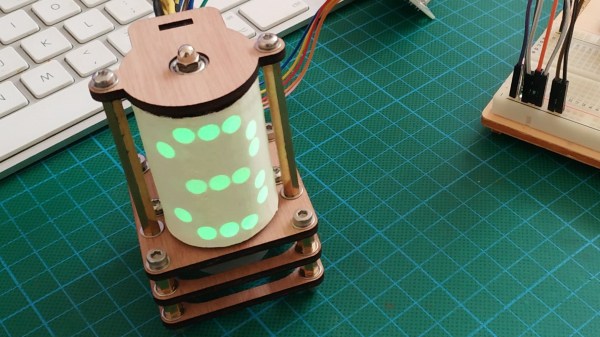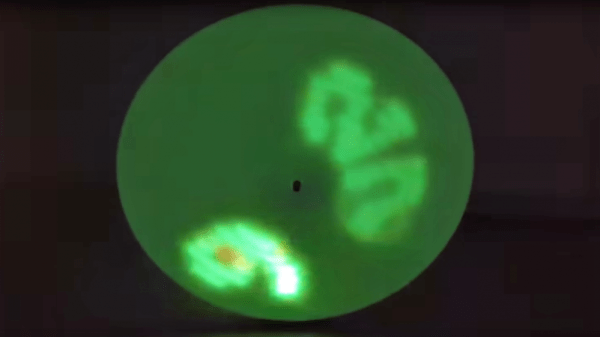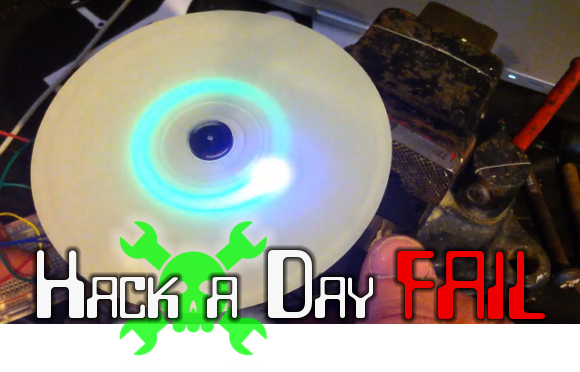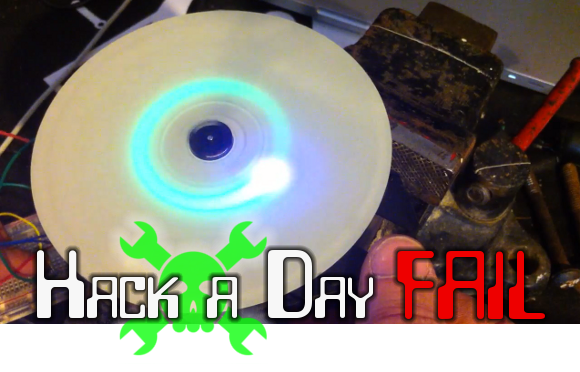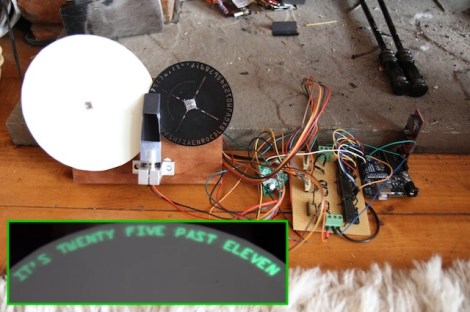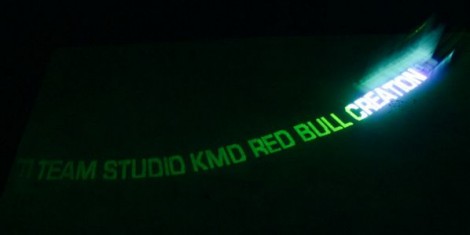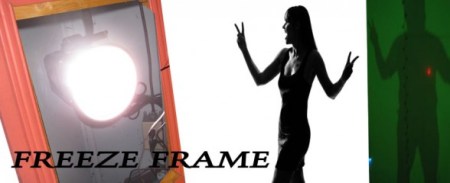For as many projects as we see using Nixie tubes in new and unusual ways, there’s a smaller but often very interesting cohort of displays that fit into the “Nixie-like” category. These are projects where something other than the discharge of noble gasses is being used to form characters. This scrolling phosphorescent single-character display is one such project, and we think it looks fabulous.
Following the *ixie naming convention characteristic of these builds, [StephenDeVos] dubbed this the “Glixie.” This is on par with the size of a [Dalibor Farny] handmade Nixie, but not so big to be unwieldy. The display modality is glow-in-the-dark film that rotates past a vertical string of UV LEDs, which light up in turn as the cylinder rotates, building up the dot-matrix character column by column. There’s some fading of the first column by the time the whole character is built up, but not enough to be objectionable. We like the whole build, with laser-cut wood and the brass and steel hardware. Check it out in the video below.
If this phosphorescent display strategy seems familiar, it’s because we’ve seen it before. Remember this persistence of phosphorescence display? Or perhaps this time-writing robot clock? It’s not a new idea, but [Stephen]’s execution can’t be beat.
Continue reading ““Glixie” Puts A New Spin On Glow-In-The-Dark Displays”

